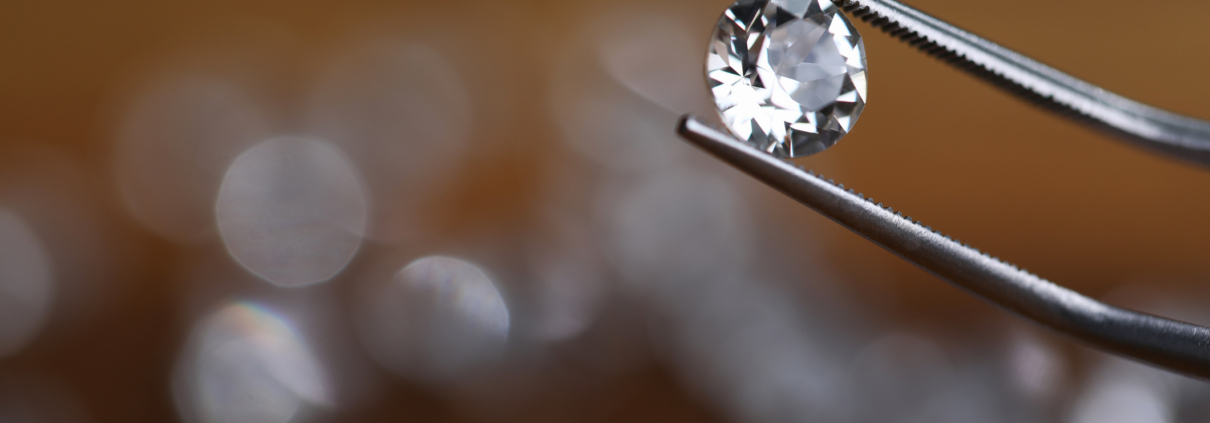Lab-Grown Diamonds vs Natural Diamonds: Your Ultimate Guide
Lab-grown diamonds have exploded in popularity in recent years, offering a sustainable and cost-effective alternative to traditional, natural diamonds. With technological advancements, scientists are now able to create diamonds that have the same physical, chemical, and optical properties as natural diamonds in a laboratory setting. But what exactly are lab-grown diamonds, and how do they compare to their natural counterparts? In this ultimate guide, we’re here to tell you everything you need to know to make an informed decision on your next diamond jewelry purchase.
What Are Lab-Grown Diamonds?
Simply put, lab-grown diamonds are human-made diamonds that are created in a lab using advanced technology that simulates the natural process of diamond formation. These diamonds are not synthetic or fake; they are physically and chemically identical to natural diamonds, with the only difference being their origin.
While natural diamonds are formed deep in the earth’s mantle under immense heat and pressure over billions of years, lab-grown diamonds are created in a controlled laboratory environment. However, they still have the same chemical composition and crystal structure as natural diamonds.
The Difference Between Lab-Grown and Natural Diamonds
One of the biggest concerns when it comes to lab-grown diamonds is the ability to distinguish them from natural diamonds. With technology constantly improving, lab-grown diamonds are becoming increasingly difficult to differentiate from natural diamonds, even for trained professionals. However, there are still a few key differences that can help you tell them apart.
Firstly, natural diamonds often have small imperfections, known as inclusions, due to their natural formation process. On the other hand, lab-grown diamonds are created in a controlled environment and are therefore usually free of inclusions. To detect these differences, experts use specialized equipment, such as magnification tools or spectroscopy, to examine the diamond’s internal and external characteristics.
Another way to tell the difference is by looking at the diamond’s color. Natural diamonds come in a variety of colors, ranging from colorless to yellow, brown, and even rare colors such as pink and blue. The color of a natural diamond is a result of trace elements present during its formation. In contrast, lab-grown diamonds are usually colorless or near-colorless, but they can also be deliberately created in various colors. These differences in colors can be detected by analyzing the diamond’s spectrum and fluorescence, helping professionals differentiate between lab-grown and natural diamonds.
What Are the Benefits of Each?
Some people have inherent preferences between lab-grown diamonds and natural diamonds — while some prefer natural diamonds’ rarity and value, others prefer lab-grown diamonds’ sustainability and affordability. If you’re not sure yet which you prefer, rest assured that there are numerous benefits to each.
Natural diamonds are valued for their rarity, which makes them more expensive than lab-grown diamonds. However, lab-grown diamonds offer a more budget-friendly option without compromising on quality. They are generally priced around 30 to 40 percent lower than natural diamonds with the same characteristics. This makes them an attractive option for those looking for a beautiful, high-quality diamond without breaking the bank.
Another significant benefit of lab-grown diamonds is their sustainability. As mentioned earlier, natural diamonds are formed deep in the earth’s mantle, and they are mined, often involving large-scale excavation and heavy machinery. This mining process can harm the environment and sometimes have a negative impact on the communities where it takes place. In contrast, lab-grown diamonds are created in a lab using renewable energy and have a lower environmental impact, making them a preferred choice for those who are eco-conscious.
On the other hand, natural diamonds tend to hold greater sentimental and financial value. They have been a traditional choice for engagement rings and other special occasions for centuries, and they continue to hold that significance today. For some, owning a natural diamond carries a certain prestige and exclusivity that cannot be replicated by lab-grown diamonds. Natural diamonds also have a higher resale value and are considered a better investment option.
The Price of Lab-Grown vs. Natural Diamonds
As mentioned earlier, lab-grown diamonds are generally priced lower than natural diamonds with similar qualities. The price of natural diamonds is determined by factors such as their rarity, size, and quality, making them a more expensive option but one with better long-term resale value.
By contrast, lab-grown diamonds can be created in larger sizes and quantities, making them more accessible and affordable for consumers. However, due to their greater accessibility, they also don’t hold their value as well. Regardless of which you choose, however, it’s important to note that both natural and lab-grown diamonds vary in price and can be influenced by market demand and other factors.
Lab-grown diamonds and natural diamonds are, ultimately, both real diamonds that offer timeless elegance and sophistication. However, which choice is the best one for you will depend on your unique goals and preferences. If you plan to sell diamond jewelry in the future, natural diamonds are best for retaining their value. If you’re looking for the most budget-friendly options, lab-grown diamonds offer exquisite beauty for any price point.
Whatever you choose, whether you’re looking to buy a natural diamond engagement ring or sell a lab-grown diamond tennis bracelet, Watch & Wares is the best place to buy and sell gold and jewelry in Orange County. Our team offers free appraisals and has decades of experience in the industry, so you can feel confident that you’re receiving five-star service and the best prices possible in the area. To learn more about us or schedule an appointment to sell diamond jewelry, contact Watch & Wares online or give us a call at 714-633-2030 today.




